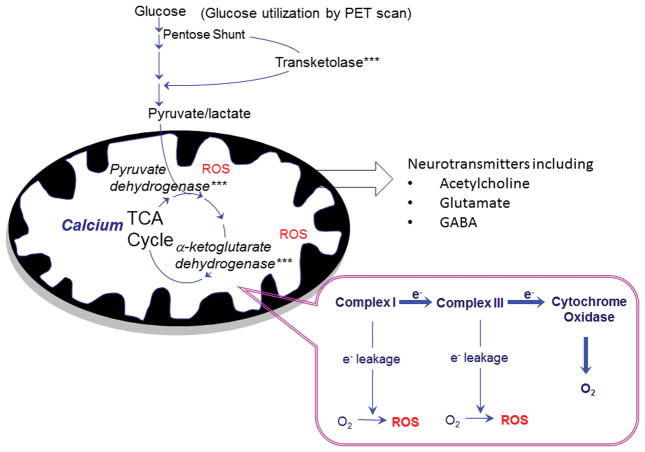Figure 2.
Role of thiamine in brain glucose metabolism for energy utilization and neurotransmitter synthesis. Like in other tissues, glucose metabolism in the brain uses thiamine-dependent enzymes at critical steps. The brain uses ten times its body mass in glucose compared to the whole body. Thiamine-dependent enzymes (noted by ***) are situated in key steps of glucose metabolism: transketolase in the pentose shunt, pyruvate dehydrogenase as a link between glycolysis and the tricarboxylic acid (TCA) cycle, and KGDHC in the TCA cycle. Brain glucose also provides the carbon for synthesis of multiple neurotransmitters, including glutamate and acetylcholine, which are important in AD. The cognitive enhancers used in AD target the neurotransmitters acetylcholine and glutamate. Normal metabolism also results in production of reactive oxygen species (ROS), which contribute to tissue damage, including neuropathy in diabetes.

